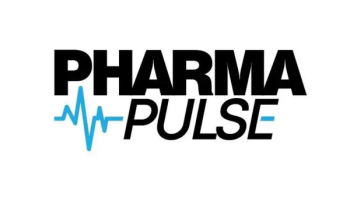
Pharma Regulatory Strategies Could Shift as Vaccine Support Declines
Ron Lanton, partner, Lanton Law, explains that declining public trust and political support for vaccines could force pharmaceutical companies to rethink regulatory strategies and investment priorities in biologics and vaccine development.
In a recent interview with Pharmaceutical Commerce, Ron Lanton, partner at Lanton Law, discussed the high-stakes implications of a new lawsuit filed by leading medical organizations to restore access to COVID-19 vaccines for children and pregnant people. Lanton explained how the case reflects deeper tensions between scientific standards, federal authority, and political influence, while also outlining what pharmaceutical supply chain leaders should watch for in terms of compliance, risk, and operational impact.
PC: How could this create new precedent that reshapes pharma’s regulatory strategy, especially for vaccines and biologics?
Lanton: It’s fairly simple. If vaccines aren’t trusted by the public or lack political support, funding and development will likely dry up. That’s the ultimate impact. But because we live in a capitalistic society, someone will always find a need somewhere.
Even if the U.S. steps back from being a leader in vaccines—which, based on current signals from HHS, seems possible—diseases won’t disappear. There will still be demand in regions like Asia, Africa, the EU, Canada, and Central and South America.
The question becomes: where does the United States fit in this landscape? I find it hard to believe that Americans as a whole don’t want vaccines. There will always be a segment of the population that values them. What we’re likely to see is a slow, gradual decrease in support, possibly concentrated in specific areas, like HIV, for example. Time will tell.
Full Interview Summary: The recent lawsuit filed by major medical organizations to restore broader access to COVID-19 vaccines for children and pregnant people underscores the growing tension between science, law, and politics in federal health policy. The case challenges actions taken under HHS leadership, particularly those linked to Robert F. Kennedy Jr., which critics argue lack a scientific or legal foundation. While studies overwhelmingly support vaccine effectiveness, the lawsuit may face limits because the disputed policies function more as guidance than outright bans—making them harder to contest in court.
The current federal immunization schedule still permits vaccination for children ages six months to 17, but the emphasis on “shared decision-making” between clinicians and parents reflects a softer, less directive stance. This shift raises broader questions about how to hold agencies accountable to long-standing scientific standards, particularly when those standards are increasingly politicized.
For pharmaceutical supply chain leaders, the key risk lies in navigating policy uncertainty. Agencies like CMS and HHS continue to adjust their approaches to vaccines without the traditional public rulemaking processes, as seen in the rollback of the Richardson waiver. These changes reduce transparency and limit stakeholder input, forcing industry to adapt quickly to shifting compliance and operational demands.
The discontinuation of certain mRNA vaccine programs abroad highlights another risk: global regulatory divergence. While the U.S. may reduce emphasis on vaccine leadership, demand will persist in markets across Europe, Asia, Africa, and Latin America. Companies must weigh whether to sustain U.S.-based operations or pivot toward international markets where vaccine adoption remains strong.
Ultimately, if vaccines lose public trust or political backing, funding and development could decline, reshaping regulatory strategy for vaccines and biologics. Supply chain stakeholders must remain vigilant, monitoring both litigation outcomes and evolving federal signals to anticipate potential disruptions.
Newsletter
Stay ahead in the life sciences industry with Pharmaceutical Commerce, the latest news, trends, and strategies in drug distribution, commercialization, and market access.





